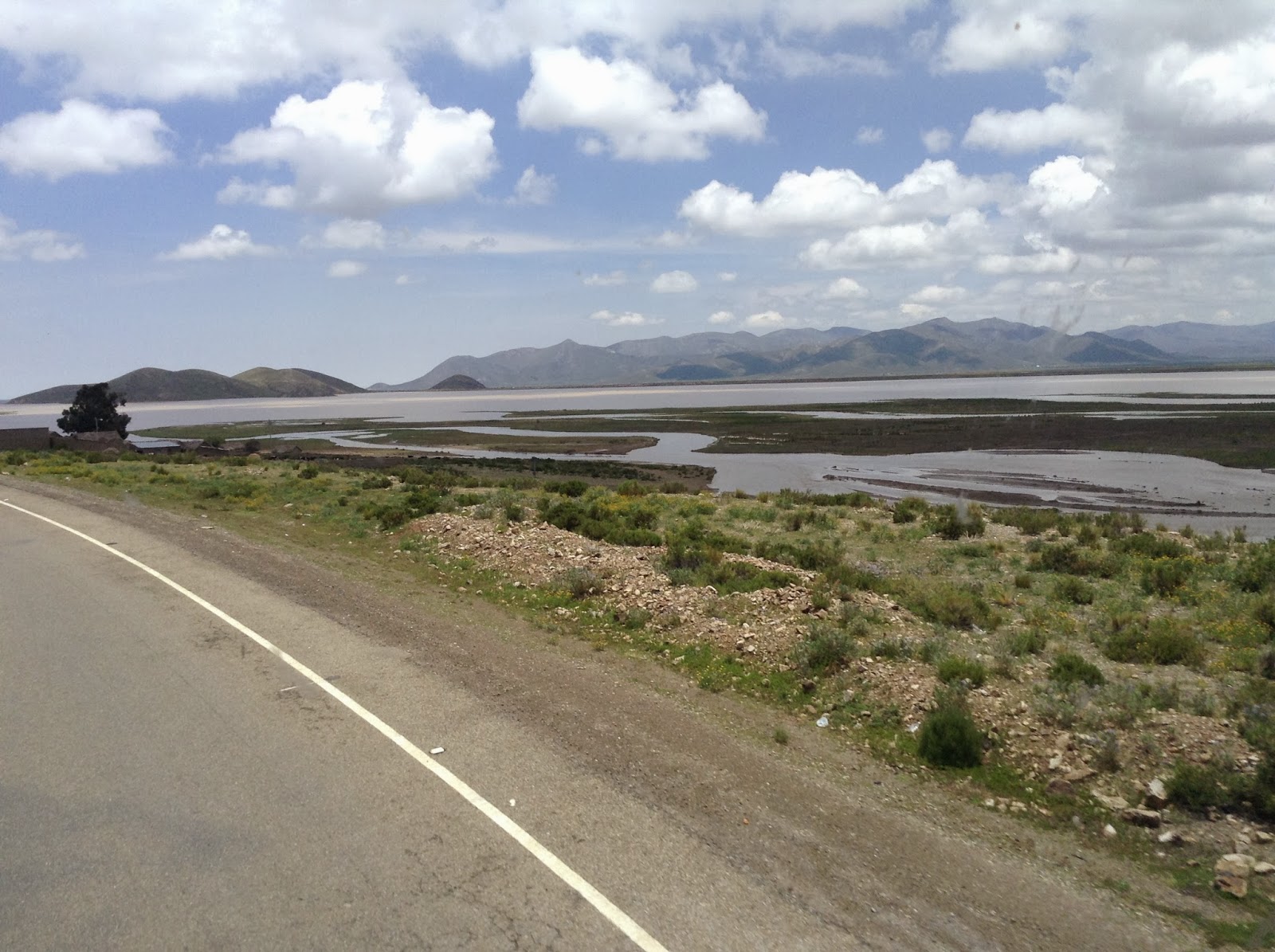Well it seems the machine is now a ward of the state! Martin is going to write to the president to see what can be done, but for this blog I am going to focus on the city of La Paz
I have to say I was very impressed. Coming in from the south, you first go through the city of El Alto, which is to put it kindly, not the prettiest city in the world, but from there you come down the hill into La Paz which is nestled in a valley with stunning mountains (some of the highest in the world outside of Asia) as a backdrop. It really is quite a stunning sight when you come over the brow of the hill and see it in all its glory.
Pictures don't do it justice but here are a couple anyway:
Aaaand here is one photo of El Alto:
La Paz is really is quite a beautiful city, and apart from Hong Kong I don't think I have seen a better example of ancient meets modern. What is different here from Hong Kong though is that La Paz is not so much a dichotomy as an agglomeration, the old and the new live together! You find people living traditionally next to high rise buildings.
La Paz is the highest capital in the world at almost 4000 meters so we expected to have a few problems with the altitude, but we had no problems at all. El Alto a couple of kilometres up the hill is the third highest city in the world boasting the highest airport in the world at somewhat over 4000m. On the trip to La Paz on the bus we passed through Potosi reportedly the highest city in the world, and passed over a mountain range at an altitude of almost 5000m before dropping into Potosi. (Incidentally passing through Potosi is probably a good move, not a pretty city at all) It can get quite cold at these altitudes so it pays to pack for cold even though it may be 40 degrees where you leave from!
We really enjoyed the range of restaurants and markets in La Paz. One restaurant we went to had a French/Italian theme. We had a plate of breads and dips, deep fried squid (all complementary), a carafe of wine, a stunning main ( I had a perfectly cooked steak topped with foie gras) then a crème brulee to finish. This was a classy meal, not your run of the mill restaurant fare, and the total cost for both of us was around $60NZ ($50US)
La Paz is an excellent place to find local handicrafts, tailor-made leather goods and almost anything for an incredibly low price (except coffee machines) Also interesting is that they are thinking of starting an English group here soon I believe.
The trip to La Paz from Tarija on the bus was quite interesting as well. It normally takes about 18 hours and leaves mid afternoon, arriving in La Paz about 8 a.m. The bus was comfortable enough, all the passengers ride on the second deck, the lower deck being for freight and luggage. It did help that Martin booked the front seats for us so we had a good view and a bit more legroom. Buses here are everywhere. Travel is cheap too, it only cost us 190 bolivianos ($33NZ for the return trip - 36 hrs of travel) Be warned though that some drivers are a bit dodgy, and slow blind corner passing manoeuvres are not that uncommon! I have some on video but it takes so long to download them here, you will have to take my word for it.
It is quite common here for people to blockade the road for one cause or another, and basically bring the country to its knees, so when the bus stopped behind a line of traffic at 1a.m and the driver turned the engine off, we assumed this was a blockade. Finally after 5 or 6 hours we walked forward to see the action, only to find a small slip had hit a bus almost pushing it over the edge, and completely blocked the road. This is basically the main highway through the country, but no-one did anything for hours. Finally a bus and then a truck tried to pull the stuck bus out. After a few dodgy scenes they got it out, then 4 guys started shovelling the slip of the road! Finally after nearly10 hours someone figured out we may need a machine! Soon thereafter we were on our way again slowly weaving through traffic. You can imagine the backlog of traffic after 10 hours on the main route! I am not sure how many trucks and buses we passed but it seemed like hundreds.
One advantage for me having been held up for 10 hours, was being able to see the countryside, especially the altiplano in daylight. This is probably some of the remotest countryside in the world. People live very simply and traditionally, you see them out herding llamas and sheep, following them around like in Bible times. Here are a few pictures:
Is this the remotest soccer field in the world?
So that's a flying visit to La Paz.
A few weeks ago I gave my first service meeting part in Spanish. If I start downloading it now it may be ready for my next post! Also we had our circuit assembly a few days ago, and in one week more we have the circuit overseer and District overseer visiting our group in San Lorenzo for one day. So next post will have a spiritual theme. We need to travel back to NZ for a month for work in March and we fly out the day after the visit by the CO and DO. Looking forward to seeing family and friends especially our granddaughter.
See you next post!














